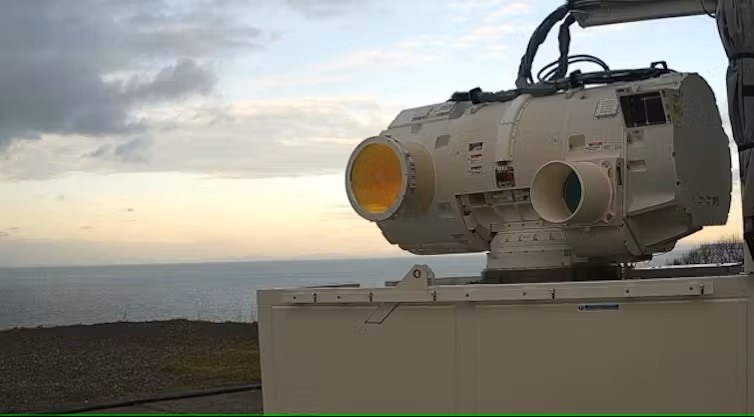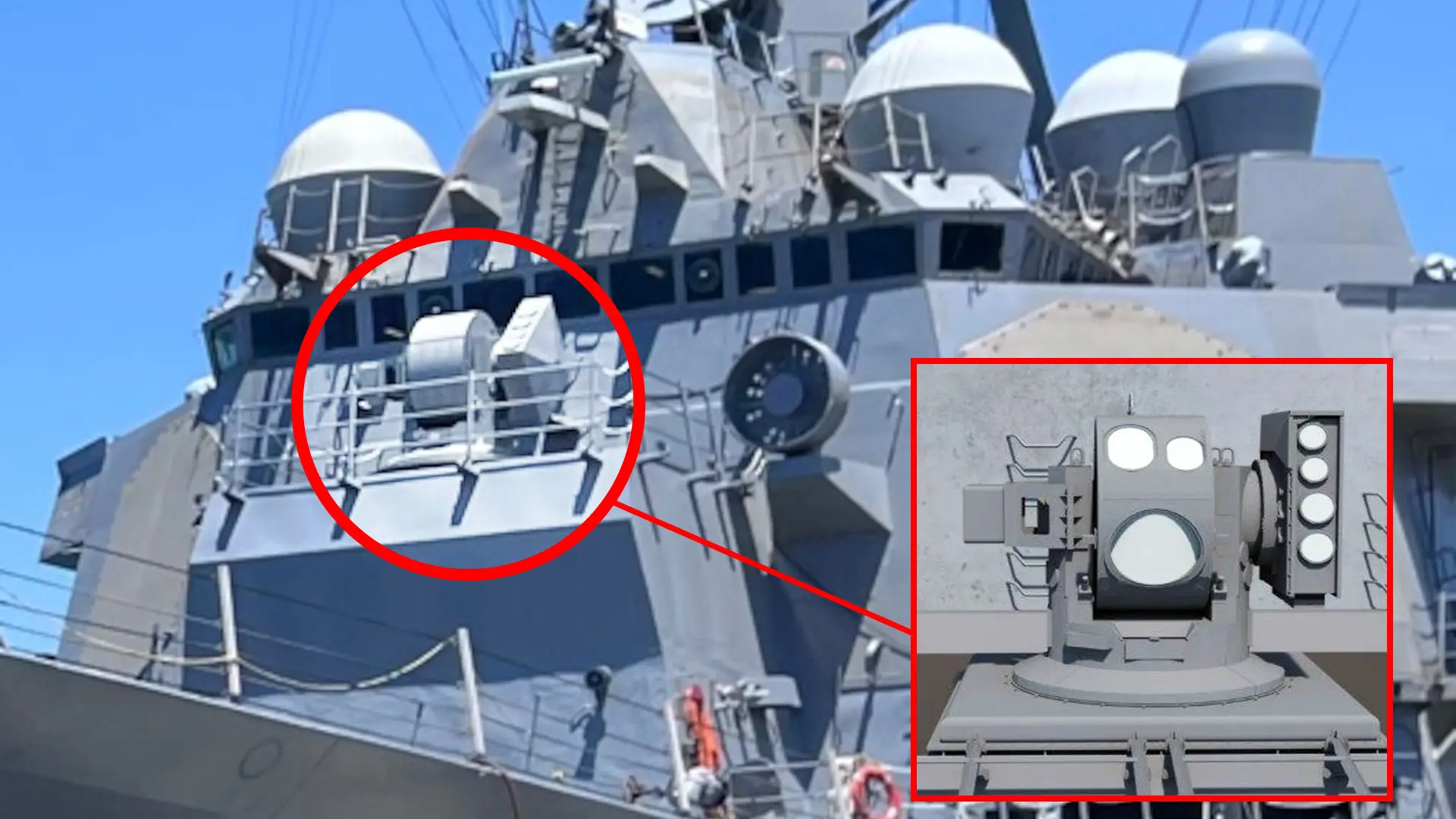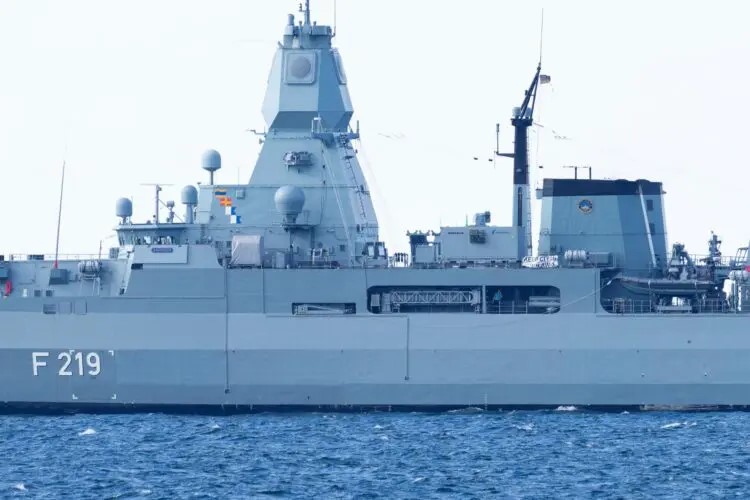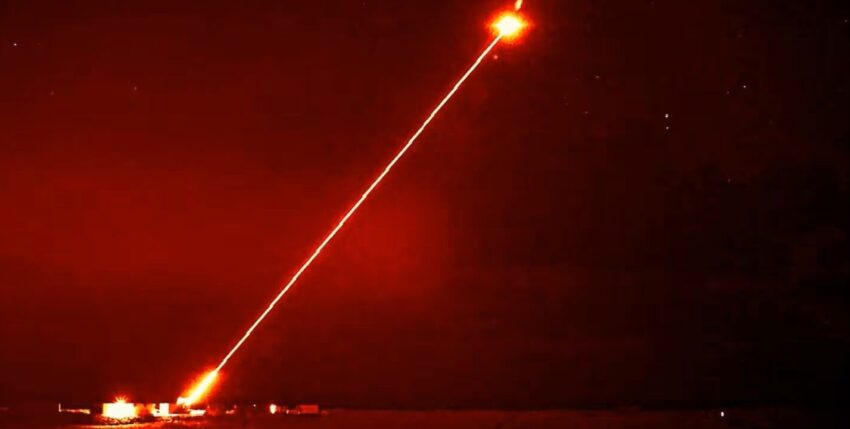London - The UK has moved a step closer to the military use of lasers after successfully trialling its new laser project. The British Ministry of Defence announced that the "DragonFire" energy system had shot down several drones with laser beams while flying off the coast of Scotland for the first time.
Joint project
The British military is pursuing this project with British industry (MBDA UK, Leonardo UK and QinetiQ) as an effective and cost-efficient way to counter the growing threat from drones and drone swarms. The exact range of DragonFire has not been disclosed, but according to the UK Ministry of Defence, it can hit a coin a kilometre away and also works as a line-of-sight weapon.

These ultra-modern laser weapons have the potential to change the battlefield for good. They help to avoid the use of expensive missiles and at the same time reduce the risk of collateral damage, according to the British Defence Secretary. And more importantly, the laser system is much cheaper than the missiles currently in use. According to the developers, the operating costs are generally less than 10 pounds (< 12 euros) per "shot".
State of development
More than €92 million has been invested in the UK's DragonFire project, a technology programme launched in 2017, but it has taken years of development, experimentation and testing to achieve this success. However, before a laser can be deployed on a Royal Navy ship, the system will need to undergo further extensive testing over the next five to ten years.
Countries and companies around the world have developed strategies for the combat use of drones, but also for their defence.

The United States is testing everything from hand-held jammers for drones to conventional weapons and is currently deploying expensive missiles in the Red Sea. The US, which invests almost a billion dollars a year in development, testing and evaluation, has so far only installed a high-energy laser (60 kW, HELIOS - Lockheed Martin) on the destroyer "Preble" (DDG-88, Arleigh Burke class) in 2022, which was specially developed for intercepting drones and small, manoeuvrable boats and is to be introduced on all destroyers in the coming years.

In Germany, too, sea trials were successfully completed on the frigate 124 "Sachsen" following the integration of a laser weapon demonstrator in June 2022. With the completion of almost a year of testing of the high-energy laser, developed by MBDA Deutschland and Rheinmetall, the Bundeswehr and industry have gained important insights into the possible applications, performance and development potential of high-energy laser effectors. These are to be used to minimise the risk for the next phase, the development of an operational laser weapon system for use on sea-going platforms. An operational laser weapon system is complementary to tube weapons and guided missiles and is particularly suitable for defence against drones, swarms of drones or attacking speedboats and, if necessary, against guided missiles at close and short range. MarineForum.Online reported on this on 28/09/2023.
Music of the future
The successful DragonFire test therefore suggests that the most cost-effective method of disabling high-tech drones will be a high-tech laser. A modern solution to a modern problem. But the solution still needs time. Lasers can "burn" holes in a variety of materials, but certain atmospheric conditions such as sea mist, rain or wind can hinder the shot or distort the focussed beam of light. The energy hunger of such systems also poses problems for today's on-board power generation systems. And although alternative high-power microwaves can fry electronic components almost instantly, they are less effective at greater distances. So there are still some technical challenges to be solved first.
Source: Task&Purpose, The Conversation, NavyTimes











One Response
Send the laser weapon to Ukraine, that would be the ultimate solution !!!